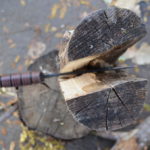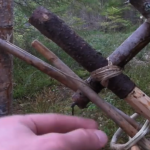Simple and Fun Ways to Sharpen Your Situational Awareness Skills
Situational awareness is undoubtedly the most important part of survival. In fact, most people who get injured or killed by accident do so because they weren’t paying attention to their surroundings. The good news is that you can hone your situational awareness skills simply by taking everyday moments and using them as learning opportunities. Let’s look at a few fun ways that you an hone your skills and develop an innate radar system that can ultimately keep you alive.
Playing in Traffic
Most of us take regular routes to our respective destinations on a consistent basis. This is true whether we are going to work, school or heading out of town. The next time you are on your normal route, start to notice what other motorists are doing. When it’s safe, look at their body language, their clothing or their appearance. Notice details about their car. Look at their driving habits. This will help you to take in a particular scene and absorb minute details in just a few seconds. It helps you to be more in the moment and aware of your surroundings.
Another neat trick is to see how many vehicles you recognize in traffic over and over again. This works great during commutes when you leave your home. See what patterns form over time as people go to get their coffee or sit in traffic. You’ll be amazed at how many things you start to recognize. This exercise will train your brain to subconsciously recognize and flag patterns, and you will be amazed at little details that you will begin to notice in other situations in the future as well.
People Watching

So many of us get buried in our phones or tablets that we are oblivious to the world around us. There was a story of a violent robbery that took place in broad daylight in a very public and busy location. However, nobody saw anything because they were too preoccupied with their electronic devices. Sit down somewhere and just watch people. Look at their body language, what they are wearing and how they are moving. Make assessments about their behavior, personality and mood.
You’ll be amazed at how much you can learn about a complete stranger simply by watching them for a few minutes. You can then start to imagine how you could interact with them and turn that encounter to your advantage under a number of different scenarios. Look at it this way: Criminals use this technique to mark targets. Police officers and security guards use it to identify people who are acting a little bit strange.
There’s a lot to be learned simply by sitting and looking around. Spending time doing this will help to train the brain to notice little details and alert you to things that seem a bit out of the ordinary. After time, this will become natural to you, and it will provide you with valuable insights into your surroundings and alert you to potential threats.
Taking in the Environment
Look at your surroundings. Pay attention to details such as signage, the color of paint on walls or pictures or posters that are hanging up. Notice little things such as faded pavement markings or the placement of bushes, trees or garbage cans along a busy street. Get used to what is normal, and you will quickly be able to identify abnormalities when they emerge.
Do the same by listening to sounds. Take a walk in a crowded place such as a transit center or mall. Learn how to distill individual sounds from the cacophony of noise in that environment. Focus on a phone ringing or a cash register chirping. Listen to PA announcements or the sounds of footsteps behind you. Do the same thing with smells. Become familiar with the environment and you will quickly notice when things are different or out of place.
All of these are little examples of how you can have fun while developing your situational awareness skills. They will take your attention and train your brain how to recognize what is normal and what is out of place. All of this leads up to a honing of skills that will prove valuable during a situation that could turn out to be life-threatening. Try these and similar exercises for yourself, and see how quickly and naturally you can turn your brain into a radar tracking system that will alert you to potential threats, even if you are not consciously aware of them.
















